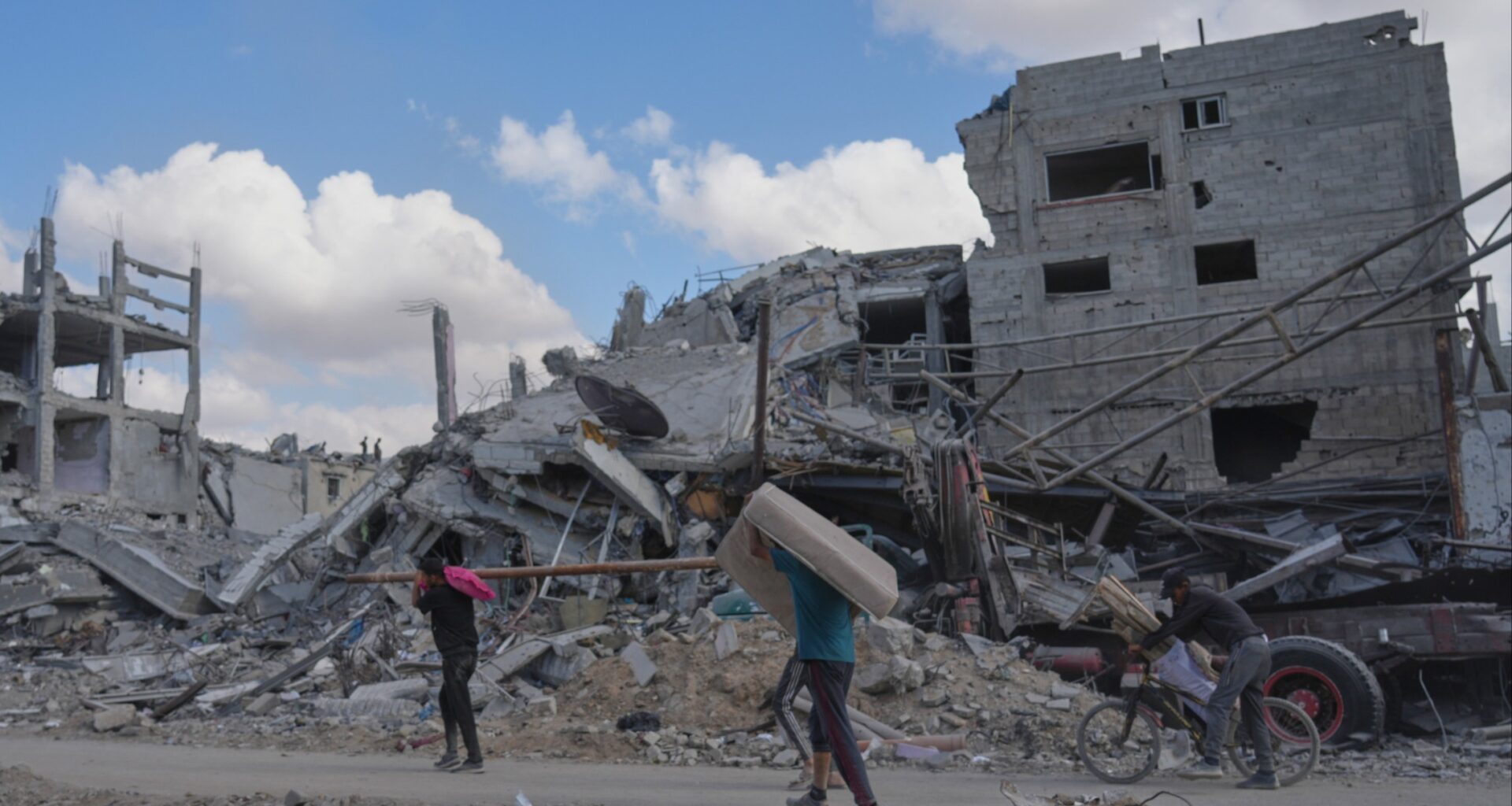The latest edition of our Sustainable Views newsletter
Dear reader,
The focus in the Middle East today as the ceasefire seems to hold and hostages are released is rightly on people. But the environmental costs of conflict are too often ignored. These include significant greenhouse gas emissions, but also the destruction of nature and farmland and the contamination of water supplies.
A UN report at the end of July showed just 1.5 per cent of cropland in Gaza remained accessible and undamaged. Satellite data revealed that by the end of 2023, all greenhouses in north Gaza and Gaza City had already been damaged. An October 2024 update by the UK-based Conflict and Environment Observatory highlights the broader impacts of war on Gaza’s environment — and the Middle East more widely.
“The intensive use of explosive weapons has generated more than 42mn tonnes of debris . . . which can be contaminated with asbestos and other polluting building materials, and may also contain unexploded ordnance and biological waste,” it states. It likewise lists the risk of “chronic inhalational exposures to pulverised building materials generated by the use of explosive weapons” and the collapse of domestic solid waste management, “spawning informal dumpsites that pose health and environmental risks”.
Conflict also impacts the climate.
Processing tonnes of building debris will take decades — one study suggests up to 80,000 tonnes of carbon dioxide will be emitted from processing only a portion of the rubble. Research elsewhere estimates military activity related to the first 120 days of conflict in Gaza created more than 600,000 tonnes of CO₂ emissions from bombing and cargo flights, fuel use and weapons. “Reconstruction needs would considerably increase this estimate, potentially adding a further 60mn tonnes of CO₂,” says the CEOBS.
And, as the organisation (and others) work tirelessly to show, this pattern is repeated in countries the world over.
Research by Wageningen University in the Netherlands estimates restoring Ukrainian agricultural soils after the war there will cost at least $20bn. It shows that after the Russian invasion in 2022, wheat production in Kharkiv dropped by more than half, while surveying and demining the soil, filling craters and other steps to restore agriculture in the region will cost at least $2bn.
“There is an assumption Ukrainian food production can return to normal after the war,” says Wilfred Dolfsma, professor of business management and organisation at Wageningen University and author of the report. “Unfortunately, that is not the case.”
The International Union for Conservation of Nature’s World Conservation Congress is taking place in Abu Dhabi this week. The CEOBS is calling for the organisation to do more to “advance dialogue, policy and evidence on the climate impacts of the military sector and armed conflicts, and their interplay with nature”.
It cites the lack of data around the military’s contribution to climate change, combined with the rise in global military spending and the fact conflict-related emissions from wildfires, land degradation and deforestation “often persist well beyond the cessation of hostilities and are closely linked to biodiversity loss”.
The CEOBS shows in Ukraine, for example, the vicious circle between war, emissions and nature loss. In summer 2024, the country was drier than average — climate change and the war led to more fires, impacting ecosystems and generating more emissions. At the same time, “the ongoing hostilities made it more dangerous for firefighters to tackle blazes or rendered them inaccessible. In this way, smaller fires grew in size and intensity, further amplifying the damage caused”, it says.
And on it goes.
An uncomfortable new reality
Elsewhere, a report from the University of Exeter and international research partners, finds the world is entering a “new reality” marked by accelerating extreme weather and the escalating physical impacts of climate change.
WWF-UK chief scientific adviser and co-author of the report Mike Barrett urges everyone to wake up. “Unless we act decisively now, we will lose the Amazon rainforest, the ice sheets and vital ocean currents. In that scenario, we would be looking at a truly catastrophic outcome for all humanity,” he says.
ESG standards for transition minerals
One outcome of upcoming climate summit COP30 in Belém, Brazil, should be a global framework to govern transition minerals, argue Angela Asuncion from the Resource Justice Network and professor Yu Hongyua. In their opinion, this should include ESG standards, contracts, and financial flows and trade restrictions.
They insist this could help deliver on the goals of the Paris Agreement and ensure a fairer transition. Failure to better manage the extraction and trade of minerals for the clean energy shift will have impacts for democracy and the legitimacy of the global order, they warn.
Beyond boilerplate disclosures
Finally, since no newsletter is complete without the next installation of the EU due diligence and reporting saga, ahead of this afternoon’s vote in the European parliament’s legal committee, you can take a look at the latest research from Frank Bold. The law firm has analysed the Corporate Sustainability Reporting Directive reports from 100 large European companies and insists they are delivering for companies and the climate.
“Companies are moving beyond boilerplate disclosures,” says Filip Gregor, the firm’s head of responsible companies. “The best performers have adopted a risk-based approach to their value chains, assessed dependencies that could jeopardise their transition, and fully engaged their governance bodies. This is what has helped them ensure reporting becomes a driver of resilience and competitiveness, rather than just a compliance exercise.”
Until tomorrow,
Philippa
Philippa Nuttall is the editor of Sustainable Views

